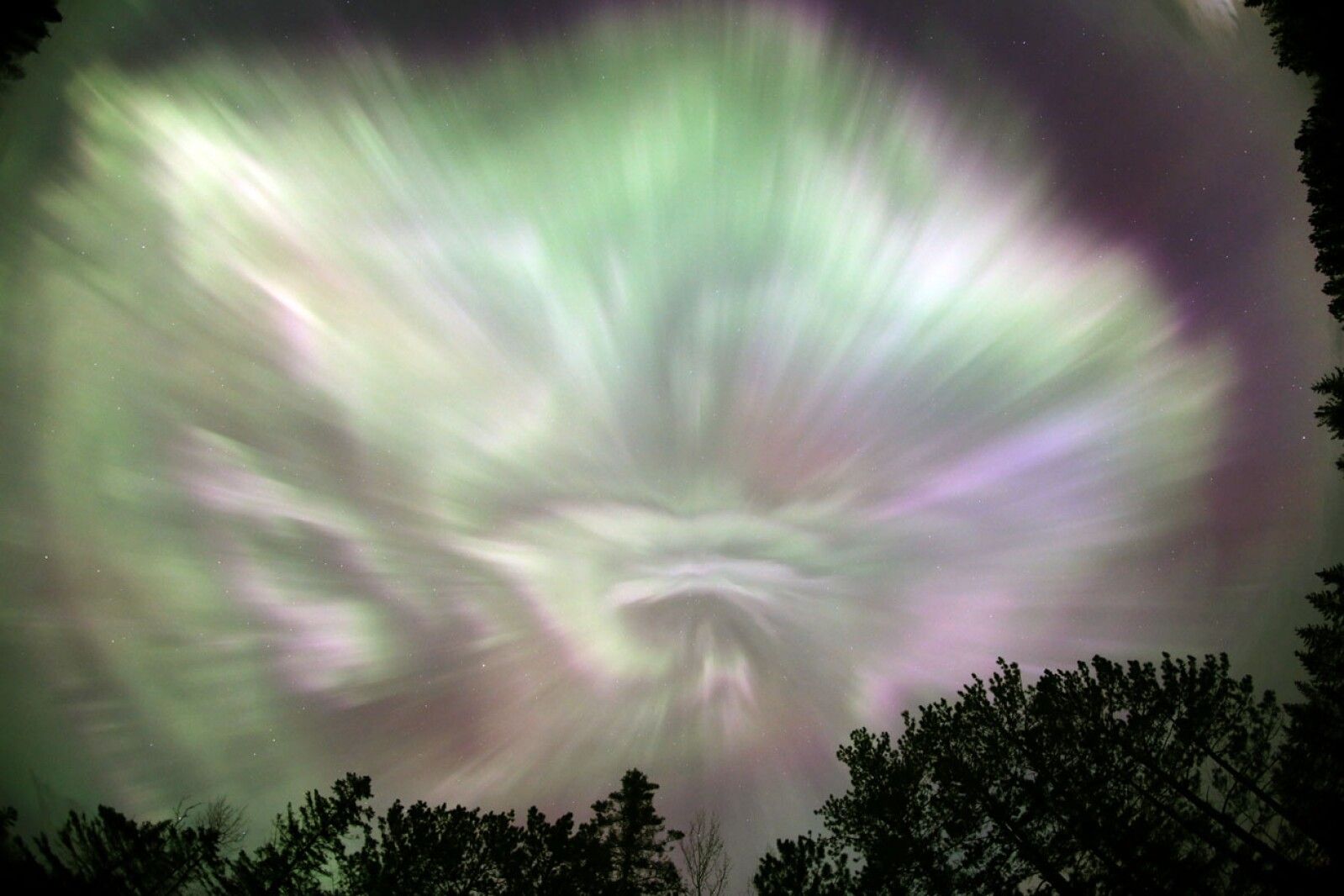Astro Bob: Strong auroral storm predicted Sunday night, May 7
Here we go again — another great forecast for a moderate to strong geomagnetic storm. The latest space weather prediction suggests that aurora may appear as soon as it gets dark Sunday night, May 7 for observers across the northern tier states and Canada.
Should the forecast hold, the storm will strengthen to the G3 (strong) level between 10 p.m. and 1 a.m. CDT. Aurora would then be visible as far south as the southern Wisconsin, northern Illinois and northern Iowa. We'll have a reasonable dark window for viewing but be aware that the bright gibbous moon rises around 11:30 p.m. local time.
I'll never forget seeing the first columns of aurora beaming across the northern sky well before twilight's end during the March 23rd storm. Maybe we'll have a repeat. Or maybe the forecast will fizzle. The only way to know is to keep watch. If your skies are drizzly and cloudy like mine consider taking a drive to find what amateur astronomers fondly refer to as a sucker hole — an opening in the cloud layer.
This screen shot of the GOES-East site shows a satellite view of the U.S., Central America and parts of Canada. This is my go-to site on my home computer. When you're at the site just click anywhere on the photo for a close up of the area. For nighttime clouds, click the Choose bar and select Channel 7. Contributed / NOAA
I often use NOAA's GOES-East satellite imagery in conjunction with the Clear Dark Sky site to track the movement of clouds and search for better skies. But I recently discovered a wonderful app called Windy.com that provides excellent, real-time cloud maps day and night. This app proved crucial in identifying a clear patch of sky in my region during the last big aurora and is available free for both iPhone and Android .
After downloading the app, click on the cloud-lightning icon (lower right) and then tap Satellite. A zoomable cloud-cover map pops up. At night the clouds look like white, cottony clumps. What you'll be looking for are the dark patches between the masses that indicate openings of clear sky.
ADVERTISEMENT
This spring has been an especially exciting aurora season. Spring and fall are the best times to see the northern lights because they're more frequent compared to the other seasons. There are several reasons for this, but a new study shows that the Kelvin-Helmholtz instability may be the cause. While the word is a mouthful understanding it is intuitive.
A Kelvin-Helmholtz instability in the atmosphere creates a series of "ocean wave" clouds over Mount Duval in Australia. Contributed / GRAHAMUK, CC BY-SA 3.0
Sometimes an instability develops between two different layers of the atmosphere or between air and water flowing at different speeds. When this happens in Earth's atmosphere unique clouds that look likes a series of windblown ocean waves result. The same thing can happen when waves of charged particles from the sun crash into Earth's magnetic field around time of the equinoxes.
During spring and fall, Earth's axis is tilted neither toward nor away from the sun but sideways to it. This turns out to be an ideal orientation to encourage the formation of Kelvin-Helmholtz waves. As streams of solar material arrive at Earth and crash into the planet's magnetic envelope (called the magnetosphere) they drive K-H waves that accelerate electrons to high speeds into the upper atmosphere where they spur auroras.
During northern hemisphere winter, the Earth's axis points away from the sun. In summer it points toward it. At the equinoxes our planet sits sideways to the sun so the entire globe experiences equal amounts of sunlight and darkness. Seasons are reversed in the southern hemisphere. Contributed / Courtesy of Sonoma State University
When Earth and its magnetic field are tilted away from the sun at the solstices, K-H waves are much less frequent, and we see fewer auroras. To make the discovery, scientists used 11 years of data from NASA’s Time History of Events and Macroscale Interactions during Substorms, or THEMIS mission , as well as four years of data from the Magnetospheric Multiscale, or MMS mission .
Let's hope the forecast is dead-on for Sunday night and that both you and I will find that mythical island of clear skies.
Source: Duluth News Tribune


